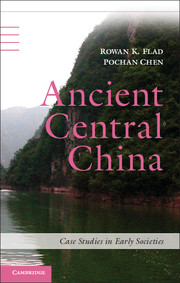1 - Introduction: Centers and Peripheries in the Ancient Yangzi River Valley
Published online by Cambridge University Press: 05 February 2013
Summary
Preliminaries
We begin with a caveat. For many, “Central China” will appear to be misapplied to the region on which we focus in this book. The term may evoke the so-called Central Plains of the Yellow River valley in northern China, which are central to most discussions of Chinese civilization and central to the primary narratives of China's origins. The area discussed here, comprising the modern provinces of Hubei and Hunan, the Sichuan Basin, and the municipality of Chongqing, is peripheral to these stories and often referred to as “Southwest China.” But the southwest of the modern People's Republic of China (PRC) in fact includes the Tibet Autonomous Region, Yunnan, Guizhou, and the western mountainous parts of Sichuan not focused on here. Because archaeology speaks to the processes that set the foundations for modern nation-states, and because these nation-states play a considerable role in determining how archaeological and historical data are collected and considered, it is appropriate to use the PRC to identify our broader area of interest, and the Sichuan Basin, Chongqing, Hubei, and Hunan are actually just south of its geographical center. As this book makes clear, notions of centrality and peripherality need to be interrogated in our investigation of the ancient world, and our provocative use of Central China is intended to draw attention to this issue.
- Type
- Chapter
- Information
- Ancient Central ChinaCenters and Peripheries along the Yangzi River, pp. 1 - 16Publisher: Cambridge University PressPrint publication year: 2013



